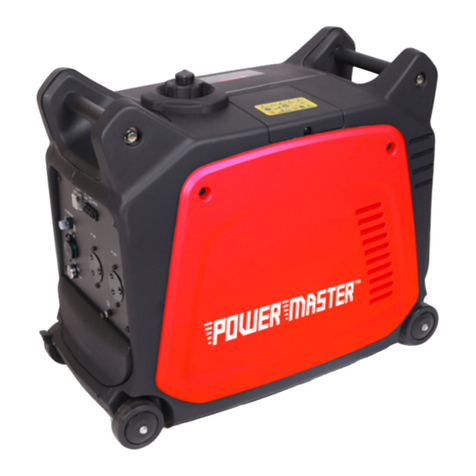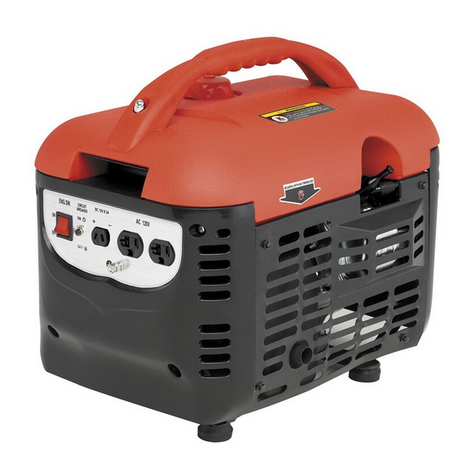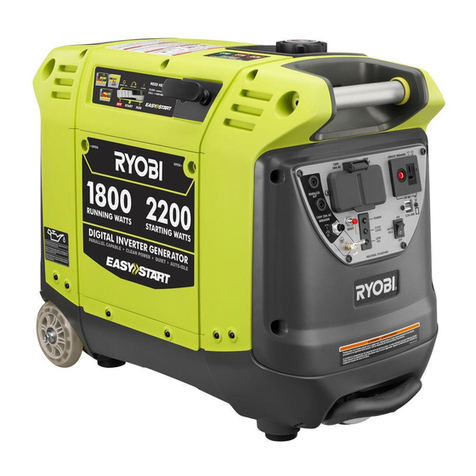Teseq NSG 5500 Installation instructions

NSG 5500 AUTOMOTIVE TRAN-
SIENT IMMUNITY GENERATOR
HARDWARE GUIDE
601-302E

NSG 5500 AUTOMOTIVE TRAN-
SIENT IMMUNITY GENERATOR
HARDWARE GUIDE

3
CONTENTS
1 Safety instructions 5
1.1 Classication of dangers 6
1.2 Warning symbols on the test system 6
1.3 Excess voltage category 7
1.4 Range of validity 7
1.5 SYSTEM STOP button 7
1.6 Safety of operation 8
1.7 Personnel 8
1.8 Responsibility for safety precaution 8
1.9 Safety regulations 8
1.10 Reduction of operational safety 9
1.11 As agreed use 9
1.12 General instructions 9
1.13 Installation 10
1.14 Test execution 11
1.15 Dangers concerning the generator 11
1.16 Dangers concerning the DUT 12
2 Installation 13
2.1 Checking the shipment 13
2.2 Delivery contents 13
2.3 Operating position 13
2.4 Line voltage connection and grounding 13
2.4.1 Mains voltage selector 14
2.5 Installation / set-up NSG 5500 17
2.6 Installation / set-up FT 5531 18
2.6.1 Test set-up 18
2.6.2 Parameter references 19
2.7 Installation / set-up LD 5505 and LD 5550 20
2.7.1 Test set-up 20
2.7.2 Parameter references 21
2.8 Installation / set-up MT 5511 22
2.8.1 Test set-up 22
2.8.2 Parameter references 23
2.9 Installation / set-up control unit (CTR) 24
2.9.1 Setting the IEEE address 24
2.9.1.1 IEEE address setting CTR 5500 24
2.9.1.2 IEEE address setting CTR 5501 25
2.9.2 Updating NSG 5500 rmware 25
2.9.2.1 Updating the rmware CTR 5500 26
2.9.2.2 Updating the rmware CTR 5501 26
2.9.2.3 Installation 26
2.9.2.4 Starting the loader 26
2.9.2.5 Startup error 28
2.9.2.6 Download operation 29
2.9.2.7 Downloading 30
2.9.2.8 Recovery 31

4
NSG 5500 Automotive transient immunity generator
3 Operation 33
3.1 General system overview 33
3.2 NSG 5500 Operation 34
3.2.1 Introduction 34
3.2.2 Powering up the system 35
3.2.3 NSG 5500 System overview 36
3.2.3.1 CDN 5500 - Power entry and battery switch 37
3.2.3.2 Control unit 40
3.2.3.3 CTR 5502 Containing ARB 5500 Modules 41
3.2.3.4 HV-supply 42
3.2.3.5 System block diagram 43
3.2.4 External trigger and control signals 44
3.2.4.1 Start/stop signal 44
3.2.4.2 DUT FAIL signal 45
3.2.4.3 CRO trigger 45
3.3 FT 5531 Operation 46
3.3.1 Introduction 46
3.3.2 Block diagram 47
3.3.3 Tests with a coupling clamp 48
3.4 LD 5505 and LD 5550 Operation 50
3.4.1 Introduction 50
3.5 MT 5511 Operation 51
3.5.1 Introduction 51
3.5.2 Block diagram 53
3.5.3 Transient diagram 53
3.6 ARB 5500 Arbitrary Waveform Generator 54
3.6.1 The Hardware 55
3.6.2 Connections 55
3.6.3 NSG 5500 +ARB Capabilities 55
3.6.4 ARB 5500 Capabilities 55
4 Maintenance 56
4.1 Cleaning the equipment 56
4.2 Moving and storing the device 56
4.3 Protection 57
4.3.1 Magnetic circuit breaker 57
4.3.2 Fuses 58
4.4 Declaration of conformity CE 61
5 Technical Data 62
5.1 Technical specications 62
5.1.1 NSG 5500 62
5.1.2 MT 5511 62
5.1.3 LD 5505 63
5.1.4 LD 5550 63
5.1.5 FT 5530 63
5.1.6 FT 5531 63
5.1.7 ARB 5500 64
5.2 Measures and weight 64
5.3 Environmental Conditions 64
6 Addresses 65

5
1 SAFETY INSTRUCTIONS
These operating instructions form an integral part of the equipment and must be available to the operating
personnel at all times. All the safety instructions and advice notes are to be observed.
DANGER!
It is imperative that you read the following safety instructions and all safety ins-
tructions in the manuals of connected peripheral systems before installing and
starting this test system for the rst time.
DANGER!
The electrical and mechanical safety equipment must not be removed, put out of
operation or bypassed. Handle all safety equipment with care. If a safety device
should be broken or is not working, the system must be put out of operation until
the safety device is repaired or exchanged and fully in working order again.
DANGER!
HAZARDOUS AREA! Connectors on the test equipment must not be touched!
Only connect and disconnect the DUT and/or xture when the “SYSTEM STOP“
button is pressed.
The equipment may only be operated within an area that is explicitly declared a
«Test Floor» (with appropriate signs) and protected against improper access.

6
NSG 5500 Automotive transient immunity generator
1.1 Classification of dangers
The safety instructions in this manual are classied in different levels. The table below shows a survey over
the relation of symbols (ideograms) and signal words to the specic risk and the (possible) consequences.
Warning symbol Signal word Denition
DANGER!
Possibly dangerous situation, that may cause damage
to persons or heavy damage to the tester and/or the
equipment.
CAUTION! Situation, that may cause damage to the tester and/or
the equipment
NOTE!
User tips and other important or useful information and
comments
1.2 Warning symbols on the test system
Different warning symbols are placed on the test system. The following table shows the assignment of symbols
and signal words to the specic risk.
Warning symbol Signal word Denition
DANGER! Warning of voltages that might involve the risk of
electric shock
CAUTION! Warning of a danger spot (refer to the documentation)
Caution symbol Denition
Warning of voltages that might involve the risk of electric shock
Warning of a danger spot (refer to the documentation)

71.3 Excess voltage category
The test system NSG 5500, as described in this manual, is related to the excess voltage category II according
IEC 60664.
1.4 Range of validity
These instructions are valid for the complete installation. Further safety regulations for components installed
in this test system or additional installed devices are not suspended by these instructions.
1.5 SYSTEM STOP button
Pressing the “SYSTEM STOP” button (on the front panel of the FT 5531) or opening another safety circuit cuts
the voltages that may involve electrical shock by touch.
DANGER!
The “SYSTEM STOP“ button does not disconnect the test system from the line
voltage!
If a danger for life, machine or the product occurs, the “SYSTEM STOP“ button
must be pressed! Thereby the test voltage in the DUT is disconnected.
NOTE!
After resetting the “SYSTEM STOP“ button, the test system must be restarted
before continuing operation is possible.

8
NSG 5500 Automotive transient immunity generator
1.6 Safety of operation
Reliable function and safe operation of the test equipment are ensured only if the relevant general precautions
as well as all safety instructions given in this manual are observed.
In particular, observe the following:
Connect the generator only to line voltage that conrms to the power specication given on the type label
(on the back of the test system).
Do not touch any conductive parts at the test point connectors, the xture and the test object during a test run.
Never apply external voltage to the sytem’s output connectors.
Disconnect the generator f rom the mains before opening the casing for maintenance or repair.
During operating the generator always observe the relevant rules of ESD (Electro Static Discharge)
protection.
To guarantee the EMC features of the NSG 5500, the control computer must meet the requirements of the
EN 50082, 55011, 61000 standard.
The operation of radio equipment or other high frequency emitting devices near the DUT or adaptation
cables, may possibly lead to wrong test results (while HF energy is emitted).
Observe the environmental conditions as described in chapter 5.3 Environmental conditions.
1.7 Personnel
The generator may be operated by qualied personnel only. It may be opened for adjustment, maintenance
or repair by authorized staff only. Teseq or its representative may not be held responsible for service not
performed by Teseq personnel.
1.8 Responsibility for safety precaution
The owner, operation supervisor and/or operator of the equipment are responsible for safety. The owner,
operation supervisor and/or operator are in charge of any safety measures that do not directly concern the
generator itself. For details, see the relevant accident prevention regulations. See also the safety instructions
in the manufacturer’s manual included with any additional instrument or device you intend to use with your
Teseq equipment.
Neither Teseq AG nor any of the sales organisations can accept any responsibility for personal, material or
consequential injury, loss or damage that results from improper use of the equipment and accessories.
1.9 Safety regulations
According to the EN 50191 standard, this equipment may involve the risk of electric shock. The owner, opera-
tion supervisor and/or operator are responsible to build-up and operate the equipment according to the
EN 50191 standard. Conductive parts must not be touched, and the test station must have appropriate warning
labels and signs. In general, observe the industrial health and safety standards pertaining to electrical test
installations in your country.
The construction of the equipment conforms to the safety requirements of IEC 348 and provides all the
prerequisites for safe and reliable operation. Development and manufacture is in compliance with ISO 9001.
The equipment conforms to the safety requirements of IEC 1010-1/EN 61010-1 (safety requirements for electri-
cal equipment for measurement, control and laboratory use). The switching power supply conforms to IEC
950.

9All mains driven types of generators are equipped for high voltage working safety in accordance with VDE
0104.
The EMC compatibility has been tested with EN 61326 version 03/2002.
1.10 Reduction of operational safety
If you have any reasons to suppose that the test equipment is not completely safe, you must shut it down and
put it out of operation. Moreover, you must mark or label the equipment appropriately so it will not inadvertently
be put into operation again. You should then call authorized service personnel for assistance.
1.11 As agreed use
The tester may be used exclusively for simulation of automotive EMC events.
1.12 General instructions
The generator is to be used only for the purposes set down by the manufacturer. It is the user’s responsibility
to ensure that the test set-up does not emit excessive radiation that may effect other equipment. The instru-
ment itself does not produce excessive radiation. However, applying interference pulses to an DUT may cause
that DUT and its cables to start radiating EMI. The method recommended by standards bodies to prevent
unwanted emission is to operate the test set-up in a Faraday cage.
Only approved accessory items, connectors, adapters, etc. are to be used to ensure safe operation.
CAUTION!
Use of the generator is restricted to authorised and trained specialists.
DANGER!
Output connections must not be handled while pulses are being generated.
During pulse generation, high voltages and currents are present at the output
terminals. BNC output connectors are accessible and can have hazardous live
voltages present while in operation.
DANGER!
The construction of the unit renders it unsuitable for use in an explosive atmos-
phere.
DANGER!
Persons tted with a heart pacemaker must not operate the instrument nor
approach the test rig while it is in operation.

10
NSG 5500 Automotive transient immunity generator
1.13 Installation
The instrument conforms to protection class 1.
Local installation regulations must be respected to ensure the safe ow of leakage currents.
Two independent protective earth connections are necessary (instrument and DUT supply) connected back
to the local permanent installation or to a xed, permanent protective earth conductor.
Operate the equipment only in dry surroundings. Any condensation that occurs must be allowed to evaporate
before putting the equipment into operation. Do not exceed the permissible ambient temperature, humidity or
altitude. This equipment must not be used in an enclosed space that would restrict the air ow through the
instrument.
Use only legally approved connectors and accessory items. The instrument must be powered from a mains
supply that provides a properly earthed mains socket. Before the unit is powered up, check that the voltage
selector on the instrument is set to the correct position.
Ensure that a reliable return path for the interference current is provided between the DUT and the generator.
The reference ground plane and the earth connections to the instruments as described in the relevant test
standard serve this purpose well.
The instruments must not in principle be opened. This may only be undertaken by a qualied specialist if speci-
cally instructed to do so in the operating manual. Since the equipment generally works with two independent
power supplies for the generator and the DUT, the instrument must rst be disconnected from both sources
before any changes are made. Besides the mains supply itself, certain instruments also operate at high voltages
which are not provided with any internal form of extra protection against being touched.
Ensure that all unused slots are blanked off before powering up.
DANGER!
Persons tted with a heart pacemaker must not operate the instrument nor
approach the test rig while it is in operation.

111.14 Test execution
The test area must be so organised that no unauthorised persons have access during execution of a test.
DUTs, together with their accessories and cables, are to be considered as being live during a test. The test
generator must be stopped and the DUT supply interrupted before any work is carried out on the DUT. This
can be implemented by pressing the “SYSTEM STOP” button.
DANGER!
The DUT is to be tested only in a protective cage or under a hood which provides
protection against electric shock and all manner of other dangers pertaining to
the particular DUT (see Dangers concerning the DUT).
CAUTION!
The safety instructions concerning all the instruments and associated equipment
involved in the test rig are to be observed.
CAUTION!
The conguration of the test rig is to be strictly in compliance with the methods
described in the relevant standard to ensure that the test is executed in a standard
conforming manner.
1.15 Dangers concerning the generator
DANGER!
Local burning, arcing, ignition of explosive gases.
DANGER!
Danger from the resultant DUT supply current caused by a ashover or breakdown
resulting from the superimposed high voltage effects.
DANGER!
Dangers from a disrupted DUT.
DANGER!
Disturbance of unrelated electronics, telecommunications, navigational systems
and heart pacemakers through unnoticed radiation of high frequency energy.
In most test rigs the interference voltage is superimposed on the protective earth conductor of the DUT in
accordance with the requirements of the test standard. Earth contacts or pins (e.g. in German and French
connectors) as well as the DUT earth can hence be at a dangerous to touch voltage. The screws, too, in certain
connectors are also linked to the protective earth conductor.

12
NSG 5500 Automotive transient immunity generator
1.16 Dangers concerning the DUT
DUTs are often simply functional samples that have not previously been subjected to any safety tests. It can
therefore happen that in some cases that the DUT is quickly damaged by internal overloads caused by the
control electronics being disrupted or it may even start to burn.
DANGER!
Internal disruption of the electronics can result in the interference voltage or the
DUT supply voltage being present on the DUT‘s housing.
CAUTION!
As soon as the DUT shows signs of being disrupted the test must be stopped and
the power to the DUT switched off.
CAUTION!
Electrical breakdown or arcing from and in plugged connections that are over-
stressed voltage-wise during the test.
DANGER!
Explosion of electronic components with re or fragmentation as a result of the
energy dissipated, e.g. from the resultant supply current or ignition of vaporised
plastics materials.
CAUTION!
Faulty behaviour by the DUT, e.g. robot device strikes out, temperature controller
fails, etc.

13
2.1 Checking the shipment
Upon receiving the shipment, rst check the packaging and outer equipment cover for visible damage. Also,
check packaging and casings of peripherals (if you ordered any). Record in writing any defects which were
possibly caused in transit. If the shipment shows damage or is not complete, immediately advise the shipping
agency and/or your dealer.
2.2 Delivery contents
The standard delivery contains the NSG 5500 with connection cables and the instruction manual. Optional
modules are installed in the NSG 5500 if ordered. Possibly, there is also optional equipment, e.g. computer
or printer.
2.3 Operating position
The NSG 5500 must be placed in upright position rmly and securely during operation.
2.4 Line voltage connection and grounding
2 INSTALLATION
DANGER!
Connect the NSG 5500 only to line voltage conforming to the power specication
given on the type label.
If the grounding is interrupted inside or outside of the equipment, the NSG 5500
will become a source of danger. Additionally, the output of the device may not
conform with the relevant test standards when the grounding of the power plug
is interrupted. Carefully observe grounding precautions. The plug on the power
cord may be replaced by qualied personnel only.
The power input of the tester is located on the rear side of the NSG 5500 (see picture 3-4). The power input
is secured by two 3.15 A time-lag fuses (220–240 V range) or two 6.3 A time-lag fuses (110–120 V range). For
details, refer to chapter 4.3 Protection.
The power plug and outlet must have grounding contacts. When the NSG 5500 is brought from cold to
warm environment, the ensuing condensation may bring about dangerous conditions.
DANGER!
The NSG 5500 may only be switched on after all parts have acclimatized.

14
NSG 5500 Automotive transient immunity generator
2.4.1 Mains voltage selector
The mains voltage selector is a small drawer placed in the mains input / main switch module. The user can
select the regional input voltage range (110–120 V or 220–240 V) by pulling out the selector (using a small
screwdriver) and turning it. The selected voltage range is marked by the small arrow on the module that points
to the white mark at the input connector assembly.
Picture 2-1: Mains voltage selector (220–240 V range selected in the picture).
The small bar indicates the voltage range
selected (220–240 V selection shown)

15To select the other voltage range, procceed as follows:
DANGER!
The NSG 5500 must be disconnected from the mains before working on the mains
voltage selector by disconnecting the power cord!
Carefully loosen the drawer from the input connector assembly using a screwdriver and turning it slightly
in both directions as shown in the picture below.
Picture 2–2: Loosen the drawer using a screwdriver
Pull out the drawer from the input connector assembly.
Picture 2–3: Pull out the drawer

16
NSG 5500 Automotive transient immunity generator
Turn the drawer until the text of the desired voltage range and its arrow is on the bottom of the drawer.
Picture 2–4: Turn the drawer
Push the drawer back in ...
Picture 2–5: Push the drawer back in.

17
Now reconnect the NSG 5500 to the mains.
... until it is xed to the input connector assembly again.
Picture 2–6: Fix the drawer to the input connector assembly
2.5 Installation / set-up NSG 5500
This section outlines a brief checklist of items that should be done before the unit is powered up and put
into service. The NSG 5500 may be set up by qualied personnel only. It is imperative to observe the safety
instructions at the beginning of this manual.
Check that all items and accessories ordered have been delivered.
Inspect the equipment for damage during transit. Any damage found should be reported to the carrier
immediately.
Carefully study the documentation and operating instructions supplied.
The mains voltage selector on the rear of the instrument must agree with the local mains voltage (mains
frequency: 47–63 Hz)
Connect the mains cable to a mains outlet that has a good earth connection.
Ensure that all modules are inserted correctly and screwed home tightly.
Observe, and adhere to, the polarity of all input and output connections.
Power up and operate according to the instructions supplied.
NOTE!
The three modules contained herein are simply the most commonly required
transient generators. Additional generators are available for use in the NSG 5500.
These additional generators will be supplied with their own user’s guide.

18
NSG 5500 Automotive transient immunity generator
2.6 Installation / set-up FT 5531
Check the instrument for any mechanical damage. Report any damage found to the carrier immediately.
Ensure that the power is turned off on the NSG 5500 mainframe and that the battery input is disconnected.
Insert the cassette in the second slot from left and push in fully. Screw in the four retaining screws fully.
Turn on the mains input power on the NSG 5500 mainframe. After approximately a two second delay the power
LED (red) on the FT 5531 generator should light.
Now the scope calibration setup shown in picture 2-7 should be connected and the output pulses should be
quickly checked to ensure that they are of the correct form and shape. When pulses are generated the green
LED (3a or 3b, whichever is selected) ashes as pulses are output.
2.6.1 Test set-up
The following set-up can be used to check the integrity of the output pulses. Due to the high frequency nature
of the 3a and 3b pulses it is critically important that cable lengths are kept to a minimum and that the test
set-up is rigorously adhered to.
The attenuator used in this test set-up is a series combination of two attenuators. The oscilloscope used needs
to a have a high sampling rate and bandwidth. Refer to ISO 7637-2 for details.
FT 5531
output
Ground plane
Scope
20 dB 20 dB
Attenuators
50 Ohm coax
Cable (<50 cm)
Picture 2–7: Test set-up with the FT 5531 and scope.
NOTE!
The FT 5530 and FT 5531 are functionally identical and may be used interchargeably
in this guide. Differences are noted where necessary

192.6.2 Parameter references
The following diagram shows the reference points used for parameter specications on the FT 5531.
t1
t4
t5
td
tr
Vs
10%
90%
Picture 2–8: Reference points of the FT 5531

20
NSG 5500 Automotive transient immunity generator
2.7.1 Test set-up
The following set-up can be used to check the integrity of the output pulses. The scope probe should be in
conformance with the specications outlined in ISO 7637-2.
Ground plane
High impedance
Oscilloscope probe
Oscilloscope
NSG 5500
output
(in module
FT 5531)
Picture 2–9: Test set-up with the LD 5505 or LD 5550 and scope.
2.7 Installation / set-up LD 5505 and LD 5550
Check the instrument for any mechanical damage. Report any damage found to the carrier immediately.
Both LD 5550 and LD 5505 modules are in usage. The term “LD Module” is used to refer to either of these
modules. All of this information applies to both modules unless specically refenced by module name.
Ensure that the power is turned off on the NSG 5500 mainframe and that the battery input is disconnected.
Insert the cassette in the right most slot and push in fully. Screw in the four retaining screws fully.
If using the battery switch, ensure this module is present and inserted fully in the rear of the NSG 5500
mainframe.
It is vitally important that the unit is connected to a good, protective earth.
Turn on the mains input power on the NSG 5500 mainframe. After approximately a two second delay the
power LED (red) on the LD module should light. After a further two seconds of initialisation, the unit is ready
for operation. The software communications will not start correctly until this initialization time is complete.
Now the scope test setup shown in picture 2-9 below 26 should be connected and the output pulses should
be quickly checked to ensure that they are of the correct form and shape. When pulses are being generated
the relevant green LED (5 or 7, whichever is selected) should ash as pulses are output.
When correct operation has been veried, the DUT can be connected to the “OUTPUT” terminals at the front
of the unit, and the required tests can be carried out.
Table of contents
Popular Portable Generator manuals by other brands
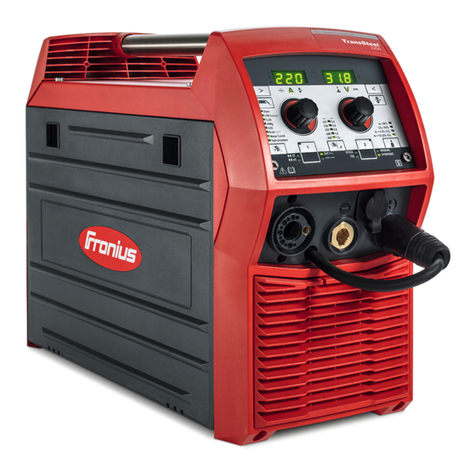
FRONIUS
FRONIUS TransSteel 2200 operating instructions
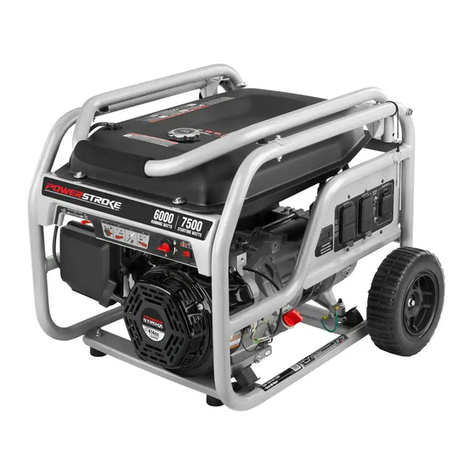
Power Stroke
Power Stroke PS906025A Operator's manual
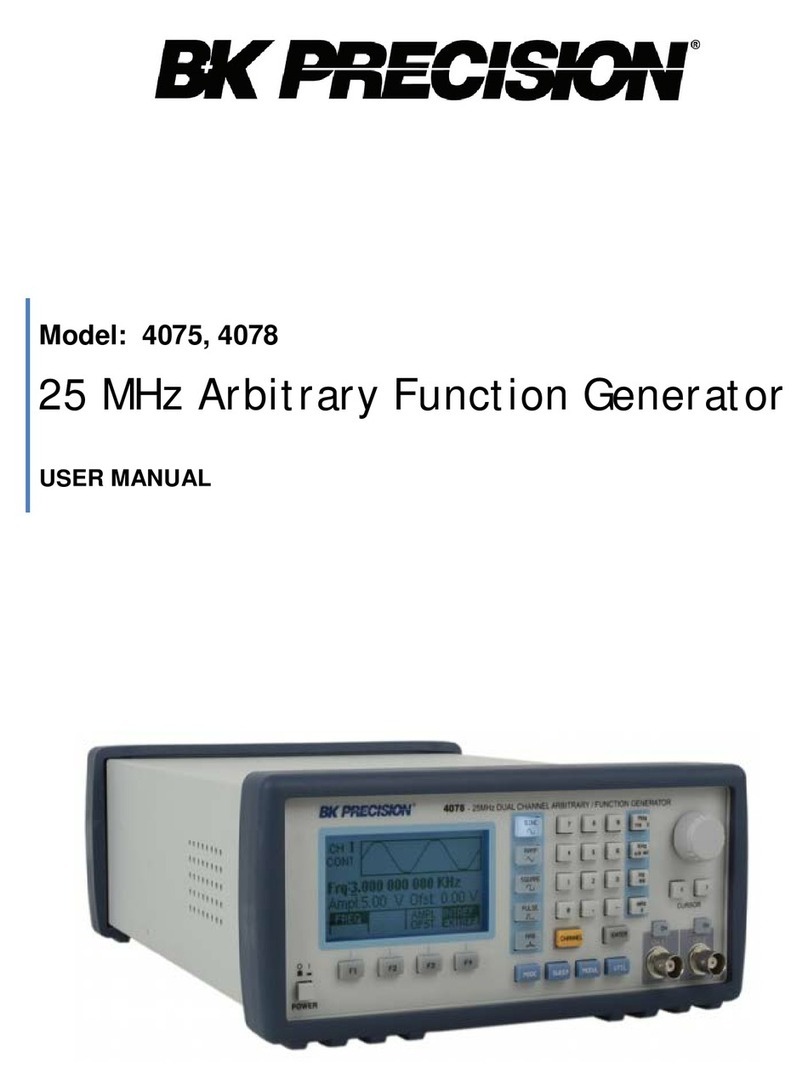
B+K precision
B+K precision 4075 user manual
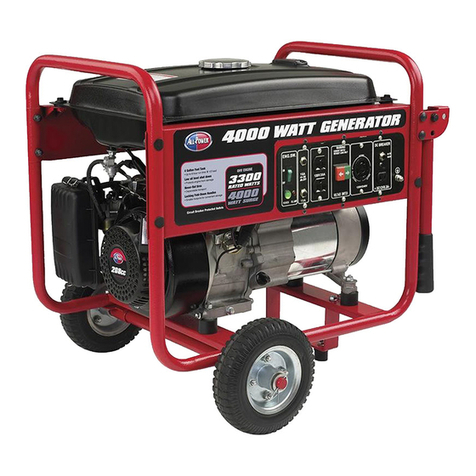
ALLPOWER
ALLPOWER APGG4000 owner's manual

Cooper Surgical
Cooper Surgical LEEP PRECISION LP-20-120 operating manual
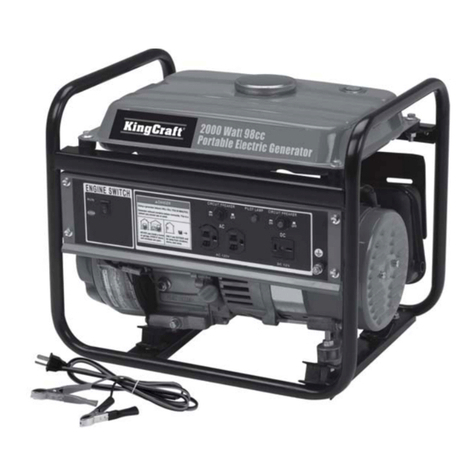
KING CRAFT
KING CRAFT 8166-11 owner's manual
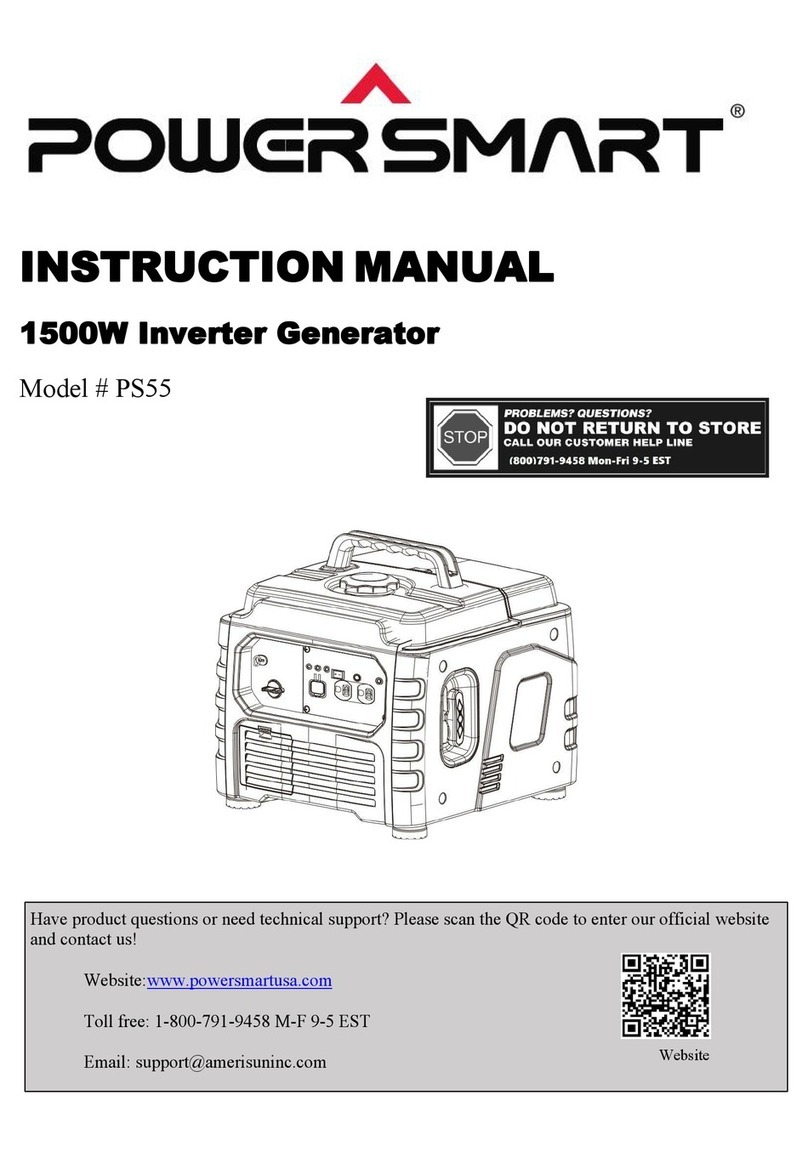
Powersmart
Powersmart PS55 instruction manual

GOAL ZERO
GOAL ZERO Yeti 6000X user guide
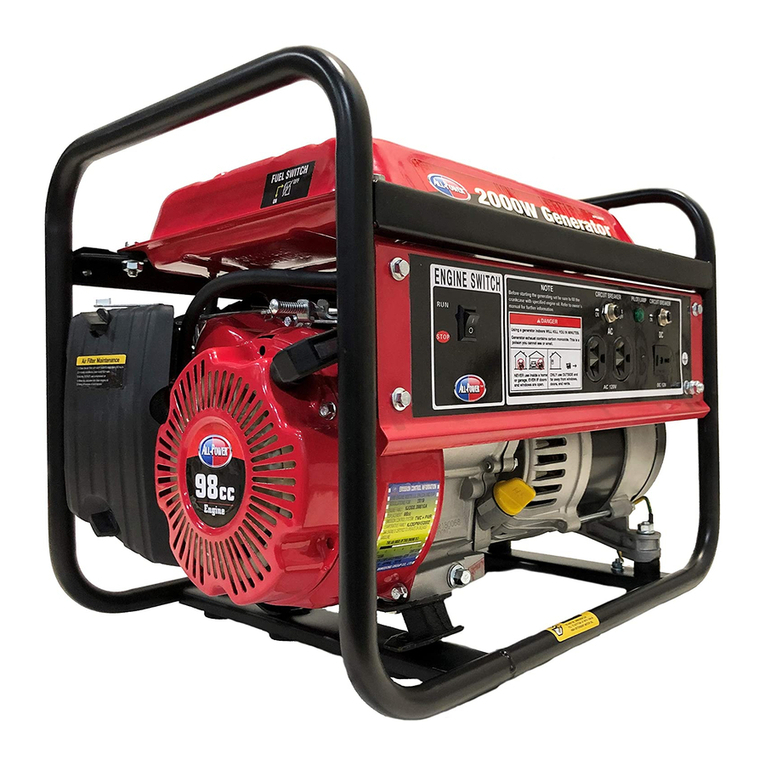
ALLPOWER
ALLPOWER APG3014 owner's manual
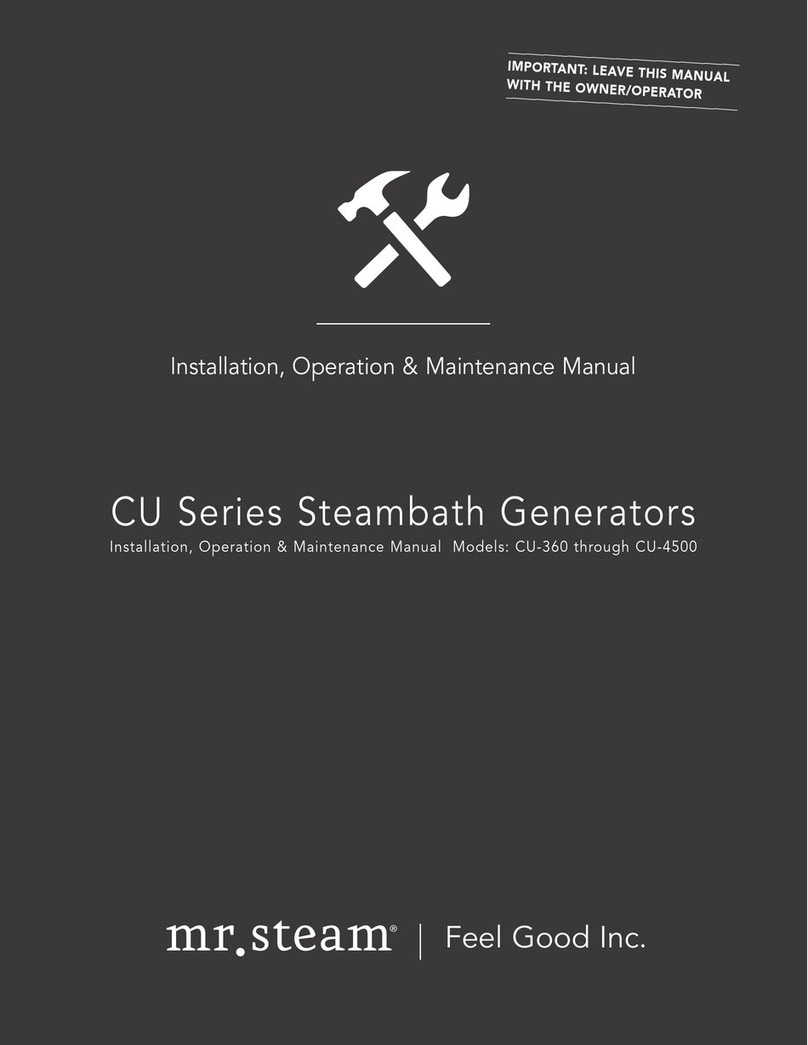
mr. steam
mr. steam CU-4500 Installation, operation & maintenance manual

ALLPOWER
ALLPOWER APG3202 owner's manual
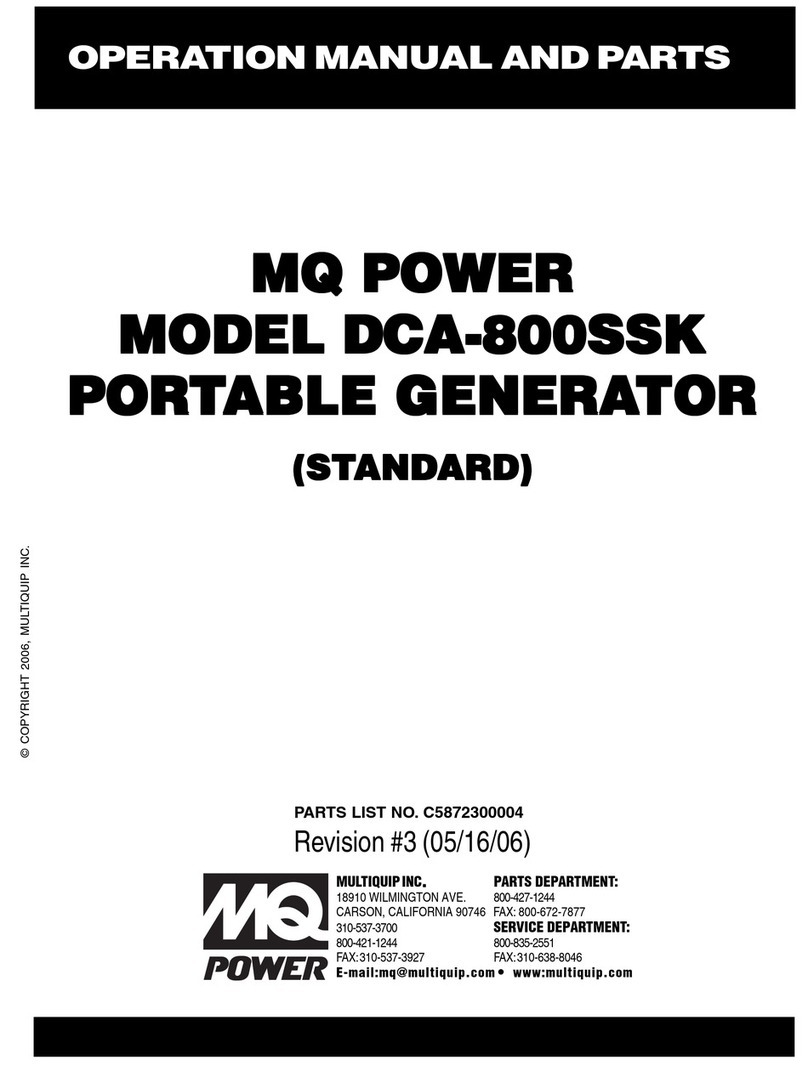
MQ Power
MQ Power WhisperWatt DCA800SSK Operation manual and parts list
